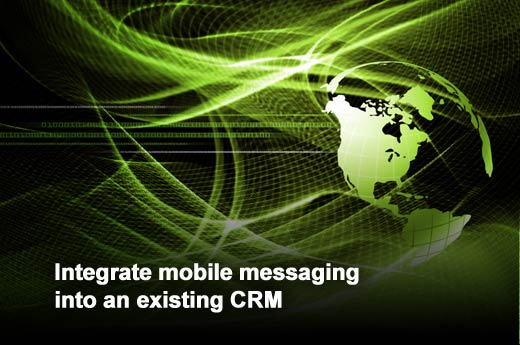The ubiquity of smartphones has made mobile marketing essential for success in today’s business environment. Effective execution, however, requires more than launching creative campaigns. Companies have to integrate mobile data across channels, including SMS, MMS, voice, social, push, Web, apps, wallet and location-based services, as the demand for personalization necessitates a cross-channel approach.
To utilize customer data and develop hyper-targeted mobile content, commonly referred to as “mobile customer relationship management” or “mobile CRM,” companies should take a phased, iterative approach. Mobile expert and Waterfall‘s head of strategy Matt Silk explores how companies can better track success and increase the return on their mobile investment by taking four small steps: Crawl-Walk-Run-Fly.
Best of all, marketers can launch many aspects of the initial phases right away. After developing a solid foundation of easy-to-implement action items, implementation of advanced mobile marketing that maximizes revenue and reduces cost becomes much more tangible.

Click through for steps organizations should take when beginning a mobile CRM initiative, as identified by Matt Silk, head of strategy at Waterfall.

Step 1: Crawl
Upsell mobile messaging using existing lists and marketing channels. For example, include a text call-to-action in email marketing outreach or promote MMS campaigns from social media marketing platforms like Facebook and Twitter.
From the data side, vet existing lists to see what contacts have mobile phone information, and work with partners to understand how usable this contact information is according to the latest industry compliance guidelines. Focus on understanding the incentives required to build a mobile list by A/B split testing campaign content and rewarding internal initiatives that gain traction.

Step 2: Walk
Capture profile and preference information across mobile opt-ins to launch segmentation and personalization. From an acquisition standpoint, start by including a field for a mobile number on all online opt-in forms. Make sure to include additional fields for basic segmentation data, in particular zip code and applicable demographic information, e.g. date of birth for an alcoholic beverage company or shoe size for a shoe company. Insert segmentation data capture as part of the mobile sign-up process, in order to collect data directly through an opt-in.
Follow a similar strategy for retention campaigns, collecting customer data in exchange for providing customer value. Remember, direct marketing is a two-way street, and as long as customers feel they are receiving value from campaigns, they will gladly share pertinent targeting criteria.

Step 3: Run
Integrate mobile messaging into an existing CRM. The key to integrating mobile across channels is developing fields that map across channels. Two excellent starting points are email address and mobile number.
With mapping fields in place, open up two-way data transfer across channels. System integration will require expertise with API development, a capability provided by all strong SaaS providers. With integrated systems, begin by having content from one channel trigger content on another channel, e.g. a reply to a text message can trigger a marketing email with more information.

Step 4: Fly
Analyze activity across channels. Design campaign tools so that marketers can access segmentation data from any channel to develop content and outreach.
In addition, build an analytics platform to view customer-centric analytics across channels and understand the types of outreach that best activate specific types of customers. View data through the lens of customer-centric metrics such as lifetime value and sales created, as opposed to channel-centric metrics like open and clickthrough rates.

Don’t Land – Soar
Don’t stop once you’ve learned how to fly. To truly engage today’s mobile-reliant consumers, organizations must continually deliver dynamic, personalized and rich mobile content that is in lockstep with all other marketing and CRM initiatives.
By utilizing deep customer insights housed within CRM systems, organizations can better engage consumers and drive them to action. To do so requires personalized engagement: a compelling message at the opportune time, in the correct format, to a precise location. All of the pieces of the customer data puzzle need to work in unison to maximize mobile marketing success.














